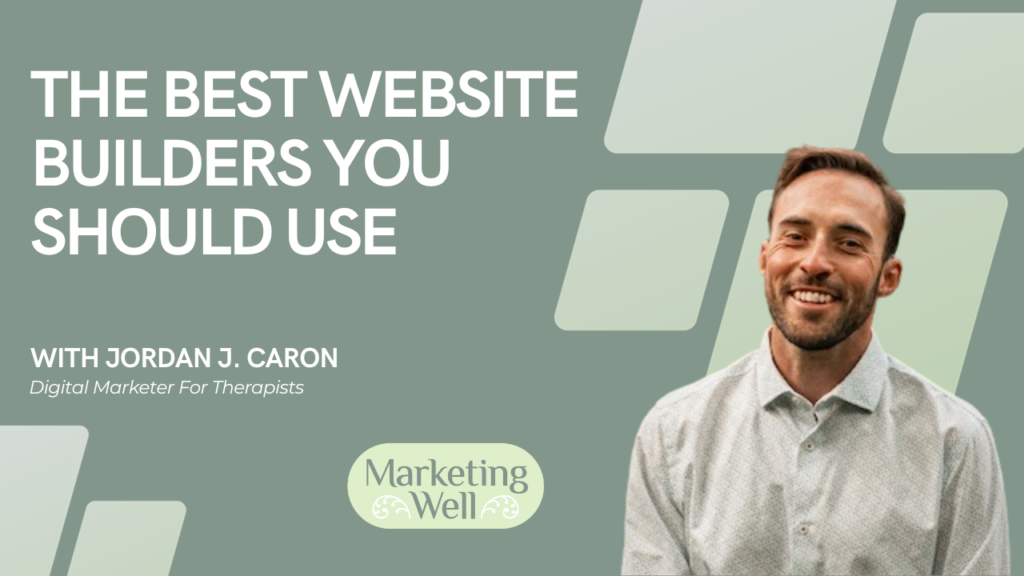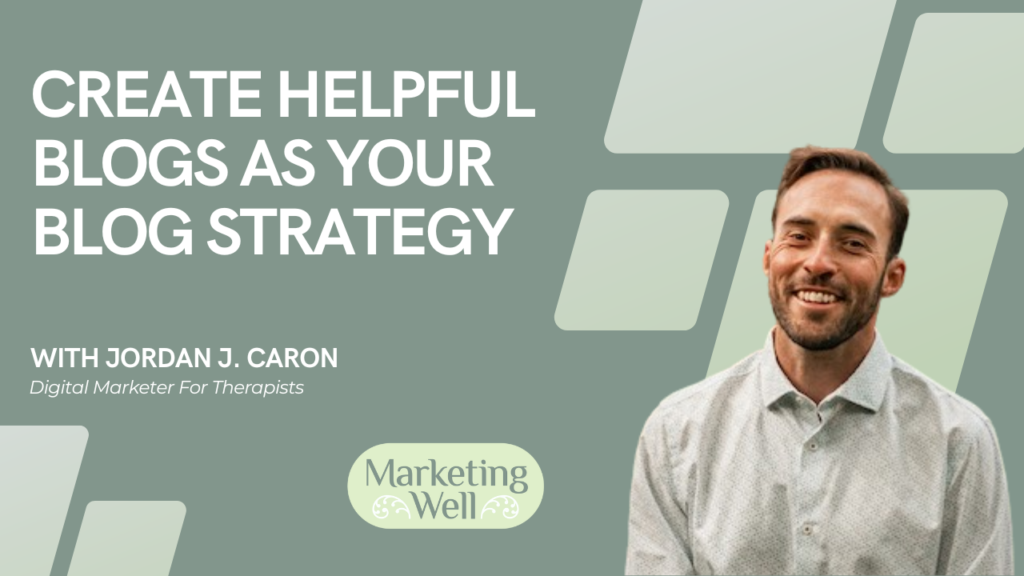In the constantly shifting terrain of mental health services and promotional strategies, establishing a commanding online presence is no longer discretionary—it’s indispensable.
For therapists, counsellors, and psychologists alike, your website serves as a virtual gateway to your practice. In this digital haven, prospective clients can delve into your offerings, grasp your methodologies, and ultimately discern whether to start their mental wellness journey with you.
Yet, crafting a therapist website authentically mirrors your practice and strikes a chord with your intended audience can be a formidable endeavour. What elements should you integrate? How do you strike a balance between professionalism and approachability? And, how can your website not only inform but also captivate and motivate action?
Do not let the challenges of website design hinder your progress. Allow me to guide you through crafting a website that magnetically attracts and retains clients.
Within this blog post, I share nine key components for crafting a victorious therapist website—from comprehending your audience to optimizing your site for devices and browsers.
Whether you’re starting from scratch or seeking enhancements for an existing site, these strategies will help you craft a website that is both enticing and efficacious.
Let’s dig in!
1 – Comprehend Your Target Audience
Before embarking on website creation, it is imperative to delineate your ideal client base.
This does not entail excluding certain individuals, but rather, homing in on your message and resonating with those most inclined to seek your services.
Are you a specialist in child therapy or do you specialize in aiding adults grappling with anxiety? Perhaps your forte lies in couples therapy. Identify the demographics your services cater to and tailor your website accordingly.
After crystallizing an image of your ideal client, delving deeper into their specific needs and apprehensions before delving into website design and marketing is paramount.
For instance, individuals seeking therapy services may harbour apprehensions about privacy, costs, the efficacy of therapy, or even the logistics thereof (particularly for teletherapy).
Directly addressing these concerns on your website can assuage potential clients’ qualms and instill confidence in opting for your services.
2 – How Client Demographics Shape Your Website Design
Apprehending the demographics of your target audience can significantly mould your website design.
For example, a sleek, dynamic website design with mobile optimization may be more appealing if your demographic skews toward young adults.
Conversely, if your target demographic comprises older individuals, ensuring your website is accessible with legible fonts and clear navigation instructions is imperative.
Demographics also influence the language and tone you use on your website, underscoring the importance of comprehending your audience.
3 – The Significance of a Lucid Menu Structure
A well-structured menu serves as the linchpin of any successful website.
The navigation menu guides visitors to the information they seek, elucidating your site’s offerings.
Maintain simplicity and intuitiveness in your menu structure. Restrict the number of main menu items and incorporate dropdowns or submenus for additional categories.
Essential pages like ‘About’, ‘Services’, ‘Contact’, and ‘Blog’ or ‘Resources’ should invariably feature in the main menu.

4 – Ensure the Mobile-Friendliness of Your Website
With smartphones assuming increasing dominance, a burgeoning populace now accesses health-related information, seeks care, and interacts with healthcare professionals via mobile devices.
Studies underscore a significant proportion of users now perusing healthcare websites via mobile gadgets.
As a mental health practitioner, adapting to this trend and guaranteeing your website’s full accessibility and functionality on mobile devices is imperative.
A mobile-friendly website necessitates a responsive design adept at seamlessly adapting to varying screen dimensions.
This encompasses ensuring text legibility sans zooming, sufficiently large buttons for facile tapping, and optimizing images and videos for mobile viewing.
Moreover, a mobile-friendly website should load expeditiously to accommodate users with sluggish internet speeds on their mobile devices.
Testing Your Website Across Diverse Devices
It is imperative to assess your website across various devices and screen sizes, ensuring a uniform and user-friendly experience for all visitors.
This entails scrutinizing different smartphone and tablet models and diverse browsers.
Consider using Browserling simulate your website’s appearance and operation on disparate devices, and effect requisite adjustments.
Vigilantly monitor user feedback and website analytics, as they furnish invaluable insights into your mobile website’s performance and areas necessitating amelioration.
5 – Selecting Colours and Fonts for Your Website
The colours and fonts you select for your website profoundly influence conveying your brand and shaping visitors’ perceptions of your services.
Opt for a colour palette that mirrors your practice’s calming and professional essence. Subdued, muted tones often resonate well with therapy websites.
Fonts should be effortlessly legible and consistent across all pages.
Avoid overindulgence in varied fonts, as it can clutter your website and obfuscate clarity.

6 – The Significance of Consistent Branding
Consistent branding across your website fosters recognition and engenders trust among your audience.
This encompasses deploying a consistent colour scheme, fonts, logo, and tonality across your website.
Additionally, ensure your website’s branding is congruent with other platforms where your practice holds a presence, facilitating a unified experience for potential clients.
Instances encompass social media profiles, online directories, email newsletters, and offline marketing paraphernalia.
7 – Crafting a Comforting and Secure Online Haven
A therapy website should evoke a virtual milieu that exudes warmth, tranquility, and safety. Employ imagery and language to evoke feelings of comfort and support.
This may encompass photographs encapsulating serenity, verbiage assuring visitors about the confidentiality of your services, or testimonials spotlighting positive client encounters.
Additionally, ensure your website is devoid of clutter and distractions, presenting a serene online expanse enabling visitors to concentrate on their mental health exigencies.
8 – Articulating Your Services Concisely and Explicitly
Potential clients should seamlessly grasp the services you extend.
Craft a dedicated page for your services, delineating each service alongside a succinct yet lucid description.
Abstain from employing excessively technical jargon that might perplex laypersons.
Focus on elucidating how each service can redound to the client’s benefit, addressing their plausible exigencies or pain points.
As a therapist, you likely harbour certain specialized niches, such as cognitive-behavioural therapy, trauma therapy, couples therapy and more. That’s why creating separate web pages for each specialty is essential.
9 – Call To Action
Once you’ve understood your ideal clients and their struggles, your solution and website copy should resonate directly with them, offering a pathway to alleviate their challenges. Don’t be fearful of being strong with your call to action. You can help people heal and you want them to know that.
The subsequent step is to transition them into clients through a compelling call to action (CTA) and offer. The most effective CTA strategy is to extend empathy into your CTA. Prompt yourself with the question, “Which aspect of my solution will be most beneficial for them or bring them closer to resolving their struggles?”
Because website visitors have limited time and attention spans, concise, consistent and compelling CTAs are paramount.
CTA button text should be succinct, less than five words, and commence with an action word (examples provided in the subsequent section of this post). Action-oriented language encourages visitors to take action. Ensure the language is transparent and conveys the benefit of clicking the button—answering the query, “What will I gain by clicking this button?”
Standard placements for CTAs include:
- The conclusion of blog posts.
- The culmination of page content.
- The blog sidebar.
- The website footer.
- The top or bottom corner of the website.
While it might feel repetitive, having at least one CTA. Of course, not every element needs to be a CTA, but each page should feature at least one. Many therapists I’ve helped want to direct potential clients to their Jane App website. If that is the case, perhaps consider whether you want to put a web form or phone number on your contact page.
Here’s an example of a call to action to book a free 15-minute consultation through a Jane App website.

Websites for therapists have become indispensable for several compelling reasons:
- Establishing an Online Presence: In today’s digital landscape, having a website is crucial for potential clients to discover and learn about your services. With many people turning to online searches to find therapists, a website enhances your visibility and sets you apart from other professionals in your area.
- Providing Information: Your website is a comprehensive platform to detail your services, qualifications, therapeutic approach, and availability. This wealth of information aids potential clients in determining whether you align with their needs, thus streamlining the initial consultation process.
- Building Credibility: A professionally designed website fosters credibility and instills trust in visitors. It showcases your commitment to your practice and underscores your dedication to offering top-notch services.
- Offering Convenience: Websites provide clients the convenience of scheduling appointments, completing intake forms, and accessing resources online. This not only saves time but also enhances efficiency for both you and your clients.
- Marketing and Promotion: Your website doubles as a potent marketing tool for your practice. You can promote your services, showcase your expertise, and feature testimonials from satisfied clients through your website. Employing search engine optimization (SEO) techniques further bolsters your website’s visibility, attracting a broader audience of potential clients.
A website is integral to establishing and expanding a private practice as a therapist. It facilitates client connections, reinforces credibility, disseminates valuable information, and streamlines practice management processes. I hope that this blog post on the essentials of your therapy website has been helpful. Contact me to learn more about my digital marketing for therapists service.




